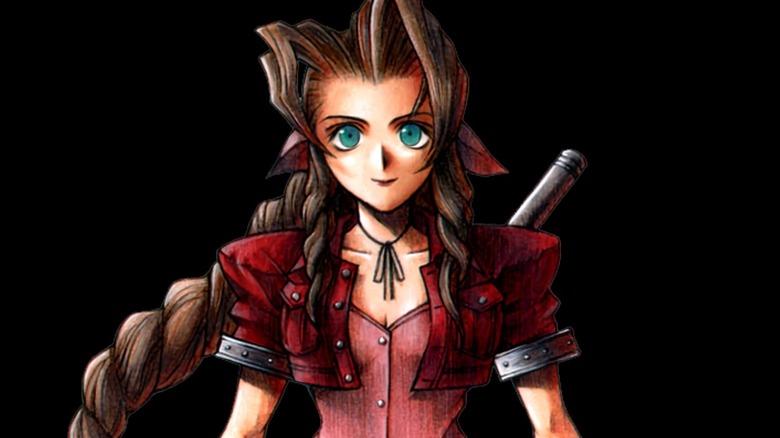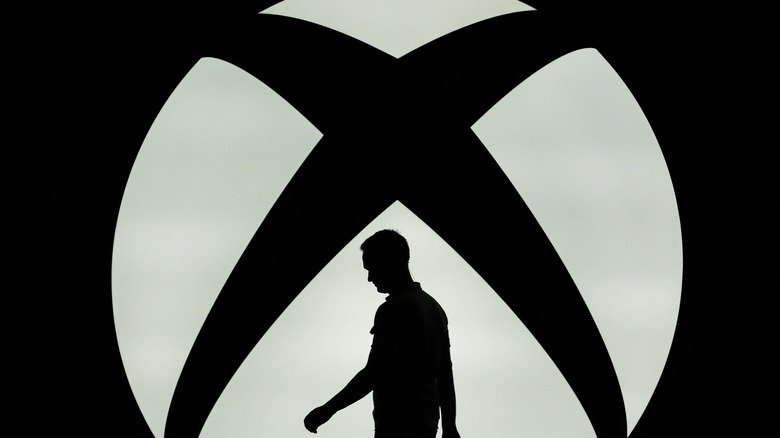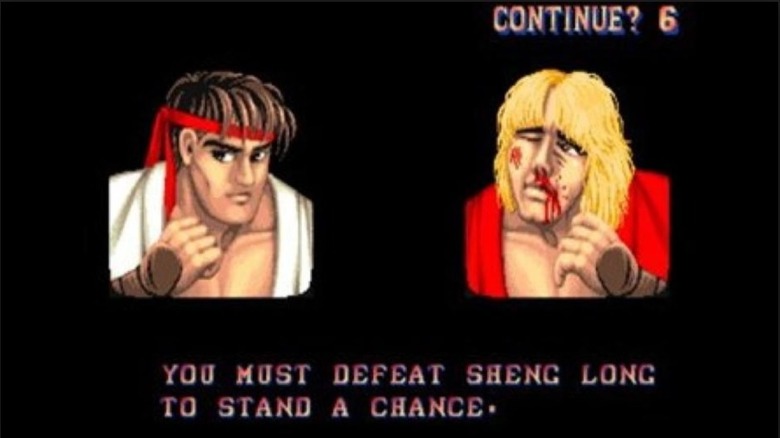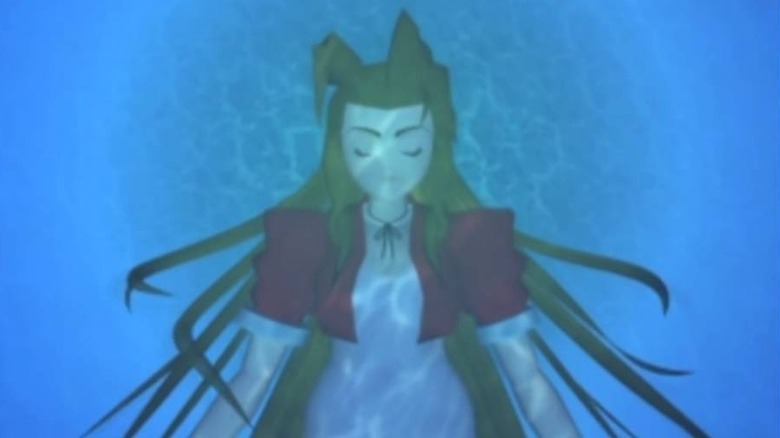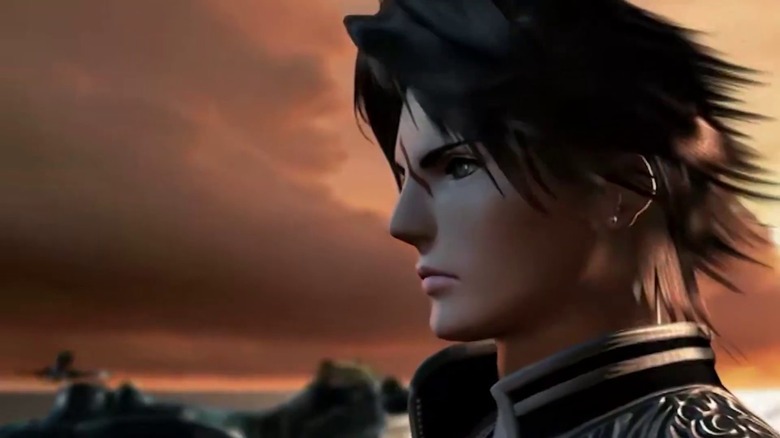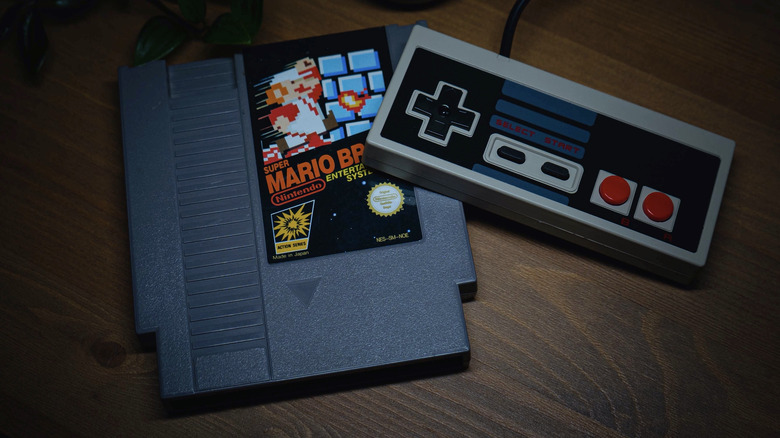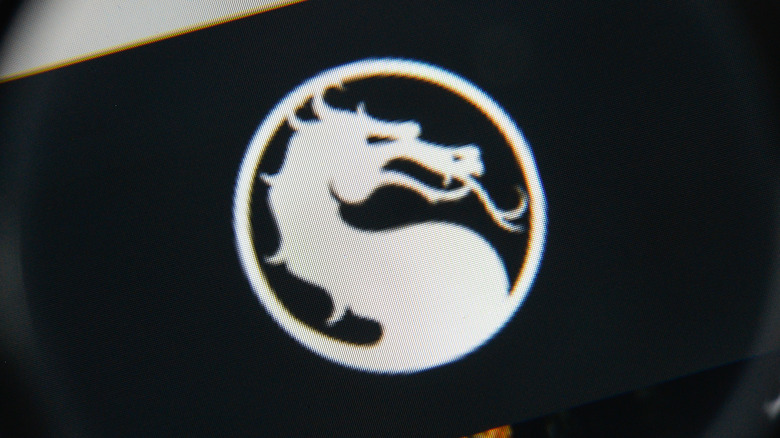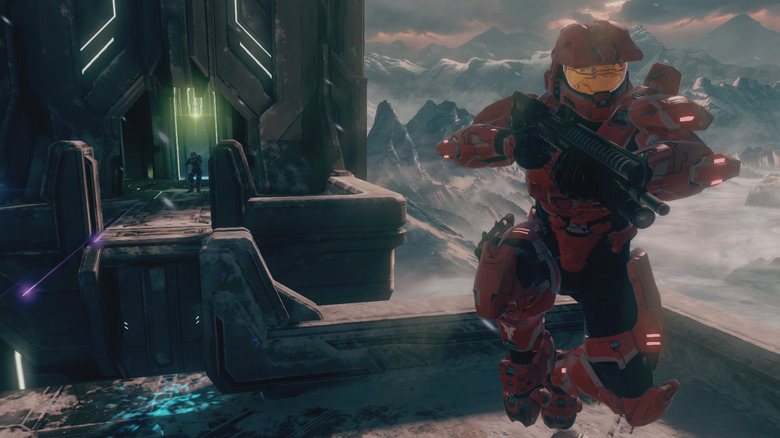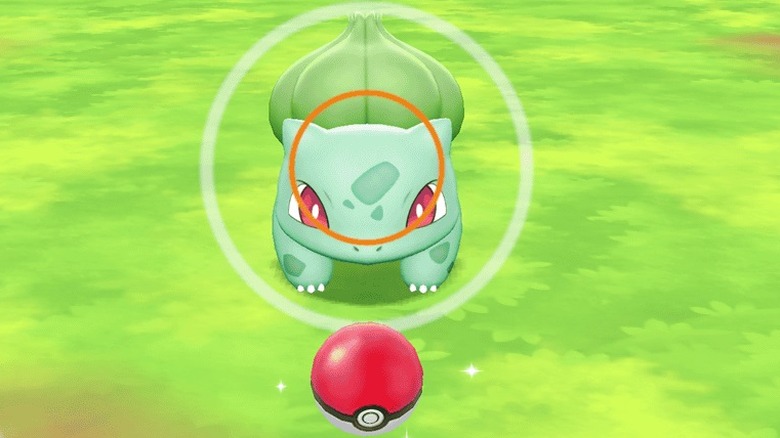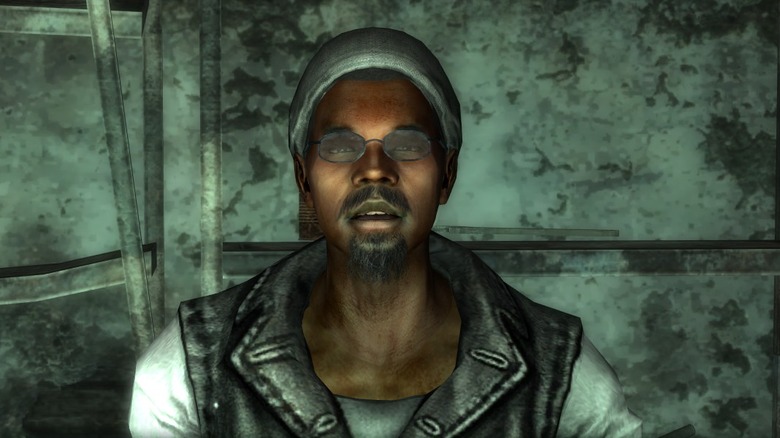Video Game Myths That Are Completely Untrue
Even more than the wonderful worlds of film, music, or art, the gaming industry prides itself on secrecy and surprises. It was only a matter of time before gaming was bound to eventually generate straight up legends and folklore. Fortunately, gaming coming of age right alongside the internet has made it a lot easier to suss out what's true, what's false, and what's just plain lunacy. Still, some legends, especially from the dark ages before Google, persist to this day, even with the truth already well established.
For the benefit of those who haven't yet done their homework, however, here's a few of the most enduring myths in gaming, and the truth about them that oh so many gamers need to hear. And the truth is that all of these have been proven 100% absolutely bogus. Take notes. You never know when you might need to shut down a terrible argument at a party.
Bread did not inspire the Xbox logo
Like many people during COVID-19 lockdowns, Xbox designer Seamus Blackley baked a lot of bread in 2020 and shared the results on social media. Eventually, Blackley's interests in baked goods and ancient history collided in a series of culinary experiments. Blackley told Fine Dining Lovers, "I felt like it was a worthy endeavour to see if we could share that food with our ancestors in that way, and it turns out that if you work at it you can make bread that's really, really good that way."
Some of these experiments yielded lovely loaves of sourdough bread that resemble the Xbox logo. Once fans got ahold of the images of Blackley's bread, many began to believe that the original console's logo was actually inspired by the designer's fascination with baking. However, Blackley's sourdough journey really kicked into gear well after the debut of the Xbox brand, so the timeline doesn't match up with the urban legend. Even so, Blackley has embraced the intersection between Xbox and baking, even going so far as to commend fans online when they produce a loaf that greatly resembles the beloved gaming brand.
BeUtiful! Also looks like @Xbox logo! https://t.co/uc0iAQW9Fe
— Seamus Blackley (@SeamusBlackley) April 23, 2020
Stop trying to make Sheng Long happen
For its time, the localization of "Street Fighter 2" did a bang-up job translating complex Japanese for a Western audience, with a lack of the language trainwrecks that plague some other fighting games. Still, some things do get misunderstood in the process, and one misunderstanding blew up bigger than anyone could've imagined.
It started with Ryu's win quote, "You must defeat Sheng Long to stand a chance!" Famous as the quote is, it's actually a mistranslation of Ryu saying you can't win without defeating his Dragon Punch (Shoryuken). But the damage was immediately done. Gaming magazines the world over would regularly get barraged with mail asking who Sheng Long was, to the point that Electronic Gaming Monthly ran an April Fools' tips article saying how to fight Sheng Long in "SF2," complete with doctored photos of him taking out Bison on the final stage. This being the pre-Google age, however, other publications ran with the absurd unlock process as gospel, even after EGM made their intentions clear.
Capcom, ever eager to please, eventually gave the people what they wanted, sorta. Sheng Long was never put into the game by name, but a character named Gouken, bearing a strong resemblance to EGM's design, did slip into "Street Fighter 3." Meanwhile, the fabled unlock process and Bison-destroying intro was eventually used in "Super Street Fighter 2 Turbo" for another character you might've heard of.
Aeris lives?
The death of Aeris Gainsborough at the hands of professional monster Sephiroth in the original "Final Fantasy 7" is basically the B.C./A.D. changeover point for games. Once gamers stopped bawling their eyes out, the conversation about games shifted from "is this fun?" to "is this art?" No character that had ever elicited that widespread of an emotional reaction. Naturally, fans did what they always do when faced with unpleasant emotions like grief and sorrow: immediately started trying to figure out ways to undo it.
Over 20 years of rumors, arguments, fake tricks, and dialogues exist on the vastness of the internet — stories of friends of a friend who managed to save poor Aeris through some arcane means or another — and 99.99999% of them a pure, grade-A crap. The only thing that has ever panned out is that a code exists for the original PS1 GameShark to keep Aeris in your party after Disc 1, but it has no effect on dialogue or the story. Even the game's director has gone on record to say that no, they wouldn't cop out in that way. As far as canon goes, Aeris only lives on in the hearts and minds of those who loved her.
No, seriously, this is a thing, she's literally in Cloud's soul or something. It's weird.
Squall Leonhart, on the other hand...
On the flipside of the Aeris Gainsborough problem, however, is a long-standing myth involving "Final Fantasy 8." In this case, it's the idea that Squall Leonhart, the game's angsty, pent-up protagonist is actually pulling a "Sixth Sense." As in, when the evil sorceress Edea impales Squall with an ice shard at the end of Disc 1, she actually kills him, and the flashback/time compression craziness that occurs later in the game is all a dying dream of sorts.
In fairness to the fan conspiracy theorists of the internet, there's at least plenty of fuel for this fire. The dude really does take an icicle to the chest in the fateful cutscene. Then the dialogue gets awfully vague when talking about anything involving Squall's wounds, so much of the symbolism of the later portions of the games is so specific to Squall, it can't help but seem catered specifically to him — and really, a game called "Final Fantasy" being some dying fever dream would make a lot of sense.
Unfortunately, series producer Yoshinori Kitase threw the icicle at that theory in a Kotaku piece. "I think he was actually stabbed around the shoulder area, so he was not dead," Kitase says. "But that is a very interesting idea, so if we ever do make a remake of 'Final Fantasy 8,' I might go along with that story in mind."
Polybius: fact or fiction?
Back in the '70s and '80s, some parents swore up and down that arcade games were turning their children's brains into mush. Most of them were talking metaphorically, butor some folks in the early aughts, it might've been literal. It was around then that rumor spread about a game called "Polybius," supposedly released in 1981. Now, we say "supposedly" because by all accounts, the game never existed. This is despite the fact that multiple websites have dedicated themselves to the arduous task of cataloguing every arcade game ever made, many of which display a title screen for the supposed title.
The game normally wouldn't be anything to write home about, but rumors also spread around that time claiming that the U.S. government tested out the game in small markets. It was said that anyone who played it suffered headaches, memory loss, and debilitating nightmares — side effects of a low-key attempt at mind control. Some time after these tests, men in black suits would collect the data from each machine, then the game would vanish the next day.
Over the years, there have been numerous attempts to track down a machine, or at least anybody associated with its creation. All of them have come up goose-egg. Still, there have been a few games bearing the name looking to live up to the legend, including a fantastic PS4 game that wound up as the basis for a Nine Inch Nails video.
Blowing in NES cartridges
This is possibly the most enduring myth of the 8-bit era, as well as the one the majority of people who ever owned the NES outside of Japan still hold. Nobody even knows where the idea to blow into your NES game to make it load came from. Still, it seemed at the time like every kid knew exactly what to do, and what made it worse is that it seemed to work. The keyword there, though, is "seemed."
See, one of the side effects of Nintendo trying to course correct from the infamous video game industry crash of 1983 was making the NES look less like an Atari and more like a VCR in the US. That included changing the layout of the cartridge loader so it looked cooler, but was functionally broken in terms of making games read properly. The actual science behind this is fascinating, but, tl;dr: While gamers swear up and down that blowing in the games is what helped make them play, in reality, the simple act of forcing the game to make a better connection inside the unit is the real hero. And in fact, the moisture from your breath probably did unspeakable damage to your cartridge. If only Nintendo tried telling us all along that it was a bad idea — OH WAIT.
Hornbuckle, the 'lost' Mortal Kombat character
Nowadays, the "Mortal Kombat" games tend to lay all their secrets out on the table (or Krypt) upfront, but once upon a time, the series was notoriously coy about how to unlock stuff like Reptile or Jade. That secrecy led to a slew of speculation and rumors. Some of these turned out to be true, like Noob Saibot. Others, like Ermac and Rain, turned out to be true later on. Some special cases were flat-out lies. The greatest case in point is the sad saga of Hornbuckle.
"Hornbuckle who," you ask? Exactly, says Jade, who gives the mysterious Hornbuckle a shoutout from time to time when she drops down before a match. Seeing as Jade's other hints lead players into secret fights, fans immediately speculated Hornbuckle was another unlockable in-game, and the story they settled on was that Hornbuckle was the palette-swapped Liu Kang chilling in the background of the Pit II stage. Electronic Gaming Monthly, troublemakers they are, once again got in on the fun with an answer to a reader letter. Of course, it's all bogus. See, Dan "Toasty!" Forden may get all the attention, but he's far from the only person on Ed Boon's staff who got their due during the course of gameplay in "Mortal Kombat 2." One of his staff members, Leanne Hornbuckle, just so happened to get one from Jade. The end.
Blast (processing) from the past
There is a whole generation of gamers who will never truly know just how ugly the Sega vs. Nintendo console war got in the schoolyard. Nothing — NOTHING — that's happened after even compares. Friendships were irrevocably damaged. It was brutal. Of course, history decides the real winner of these fights, and seeing as Nintendo is still riding high with one of its biggest console success stories, and Sega doesn't even have a console anymore, it's pretty clear who won the war. More than this, however, it seems that one of the most common weapons in this war might've been a terrible misfire.
For some time, one of the big trump cards every Sega kid could play was the fact that the Genesis had Blast Processing, which was the thing that let Sonic roll around screen faster than anything Mario could accomplish in his wildest dreams. It made sense. It was in Sega's commercials, and as we all know, commercials never lie.
Except, of course, they did. Years later, Scott Bayless, one of the senior producers at Sega during their glory years (1990 to 1994) came out with the harsh truth: Blast Processing, while not exactly a lie, was definitely an overstatement. The less PR-friendly fact was that the Genesis could overclock its memory in a way the SNES couldn't. Which, tech-wise, is nice — but just saying, one of these systems had "Sonic," the other had "Chrono Trigger." Take from that what you will.
Halo 2 ghosts
The internet is ripe with gaming-related creepypasta — that is, internet urban legends that are taken at face value as being false, but are pretty legitimately spooky stuff regardless. Every so often, though, one of those creepy stories has merit. That's the stuff you pray has a logical explanation.
Submitted for your approval: the story of the ghosts living in "Halo 2" multiplayer. These vengeful spirits would randomly appear in matches on specific maps (Lockout, most infamously). They would teleport aimlessly around the map, unnamed on the scoreboard, invincible to all gunfire, and killing whoever wandered into their field of view with lethal precision. Player death would be marked only as having been "Killed By The Guardians," the usual signifier in "Halo" for accidental deaths (falling off the map, standing too close to your own rockets, etc).
Terrifying, yes. Thankfully, this is a terrifying story with a perfectly logical explanation. Basically, the ghosts are a known glitch that would occur in "Halo 2" (and apparently, the glitch carried over into "Halo 3" and "Reach"). The stage would spawn a random bot if the map was overloaded, either trying to keep up with poor network conditions or due to too many objects occupying the map at once. So, good news: "Halo 2" is not haunted. Bad news: The glitch AI is probably better than your teammates.
Pressing 'B' to catch Pokémon
Just like the company's hardware, myths surrounding Nintendo games seem to be nigh-unbreakable, with staying power above and beyond the norm. Maybe it's because Nintendo's player base is younger, and rumors get around schoolyards faster than anyplace else on Earth. It's the only logical explanation about how a myth like this can endure across generations of "Pokémon" players.
We're talking, of course, about the myth that holding the B button and a direction — which direction varies depending on who's telling — while trying to capture a Pokémon will improve your odds of that Pokémon staying in the ball. This one's just a flat-out lie. You know it. Don't even have to Google it; you know it. How do you know it? Because there's literally enhanced Poké Balls you can buy in-game, whose specific purpose it is to raise the probability of capturing a Pokémon that will stay in the ball. Nintendo does NOT work in redundancies, and you know this.
And yet, here we are, over 20 years after the release of "Pokémon Red" and "Blue," and still the superstition persists. Some call it comfort. Some deny the truth. Some say it's habit. The facts will not stop a player from holding that button for dear life when there's a Pokémon they really want in sight. It is the Pokémon Trainer's prayer.
Three Dog's prophecies
It's not too far-fetched seeing anybody use a video game to predict the future, especially considering how accurate they can sometimes be. But there's a huge difference between "Madden" predicting the outcome of the Super Bowl and, say, letting radio transmissions in "Fallout" predict the death of the Queen of England.
Some years back, a post over on Snopes purported to have found a hidden radio station in "Fallout 3" that didn't just contain more Morse code, but seemed to sound like a despondent Three Dog reading off a series of numbers. Those numbers apparently corresponded to specific dates, predicting a few specific events: the day Gary Coleman died, the Deepwater Horizon oil spill, the death of Queen Elizabeth II, and Britney Spears winning an Oscar.
The supposed method to unlock the hidden radio station was fishy to begin with, but the idea of a Morse Code station spelling out things that occurred after the game was even released sent the internet conspiracy machine into overdrive for a while. Right around then, Bethesda had to nip this in the bud with an email to GamesRadar to say, definitively, "There's no truth in it."
The Madden Curse
It is the ultimate in superstitions, believed by gamers and non-gamers alike. There's historical basis, but the truth is less supernatural than folks think. Myth has it that the athlete that ends up on the cover of "Madden" is basically screwed; misfortune will cost him his career in the short- or long-term. Yes, the curse has been analyzed by experts, and yes, it does have some statistical merit.
For years, EA's brushed off talk of the curse, as injuries and bad seasons are just the name of the game, which sounds like PR speak for "Please keep appearing on our covers," but they might be right. Think about why EA might select a player every year. Said player is at peak performance. They make the cover. Suddenly, there's a downfall. Maybe the player's done the best they can. Maybe they get injured. Maybe they just get arrogant, which can often lead back to injury since they're being less careful. There's just so much of a human element at play with the Madden Curse to chalk it up entirely to the whims of bad fate. Whatever the case, it seems the curse was finally broken in 2020, when cover athlete Patrick Mahomes and the Kansas City Chiefs won Super Bowl LIV.

